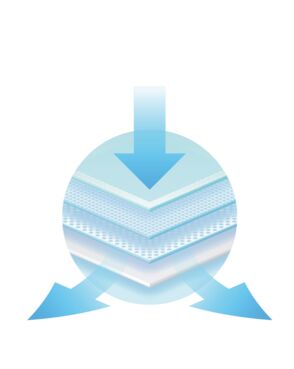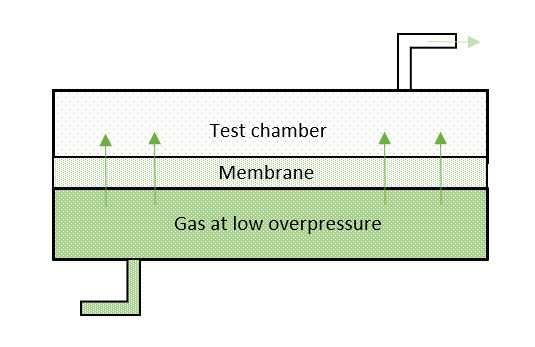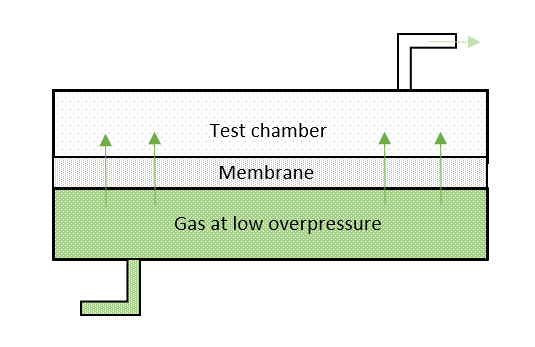Easy and Fast Permeability Measurements of Films and Membranes
Description of Technical Challenge
Permeable materials exist in a variety of applications, such as food packaging and hygiene and health products, and include paper, cardboard, plastic, rubber and cotton among others. Permeable surfaces contain pores on a molecular level, which allow certain fluids to pass through.
The permeability of a material is not a defect, but a general property of the material. The permeation is due to an intrinsic porosity of the material. The pores can be large (micrometer range) or very small (sub-nanometer range).


Depending on its “chemistry,” the permeable material can be quite selective allowing some fluids to pass while other are almost completely blocked. A common example being hydrophobic membranes like PTFE blocking liquid water, but passing air and water vapor.
Permeation measurements can be an advantage when used in many polymer and paper manufacturing applications where penetrating fluids might alter the properties (durability, odor, taste) of the product. Since different materials have different permeation abilities, knowing the permeability rate is often crucial for developing new products. Parameters influencing permeation are the penetrating fluid, applied pressure, temperature, material thickness and surface area.
Permeation is measured in SI units of mol/(m s Pa).
The permeation of films and membranes can be determined by observing the fluids of interest passing through the specific material during a relevant amount of time. This method has however some drawbacks, as it is time-consuming and sometimes complicated.
The INFICON Solution
An alternative method for fast measurements is to use hydrogen as a model molecule and measure gas molecules passing through a membrane with the help of a leak detector from INFICON. The solution explained here can be adopted for material quality control or for determining the material permeability properties. The latter requires extensive material studies including correlation measurements between hydrogen gas and the fluids of interest for each membrane or film.
Besides a leak detection instrument, also needed is a tracer gas bottle and a customized nest (chamber and fixture holding the membrane in place).
The procedure starts with the gas chamber filled with hydrogen tracer gas to a very small overpressure using INFICON’s TGF11 Tracer Gas Filler. Gas from the chamber will permeate through the membrane and accumulate in the test chamber.


The permeation process will go slowly at the beginning and proceed faster once the membrane gets filled with gas. In order to achieve the highest permeation flow, it is recommendable to wait until the membrane is fully saturated before starting to measure. Once it is saturated, purge the test chamber to remove the tracer gas and start measuring the time. Wait and let the tracer gas accumulate in the test chamber before measuring the hydrogen concentration inside it with the help of the AP29 ECO Sampling Probe and the Sensistor ISH2000 Hydrogen Leak Detector. This will allow determining how many mol/s passed through the membrane. By knowing the membrane thickness and the tracer gas pressure, you can easily calculate permeation values in the SI-unit mol/(m s Pa).
When the measurement is complete, the TGF11 Tracer Gas Filler removes the tracer gas in a controlled way avoiding contamination of the work area.
The gas used for permeation measurements is a non-toxic, 100% environmentally friendly and non-flammable gas mix (5% H2/95% N2).
Benefits of Measurements with Instruments by INFICON
- Fast and easy measurements
- No operator interpretation - precise measurement obtained
- Dry method
The intention of this application note is providing general information. For simplicity's sake, some relevant factors have been omitted or only marginally treated. For more detailed information about how to measure permeability of membrane and films, contact us!